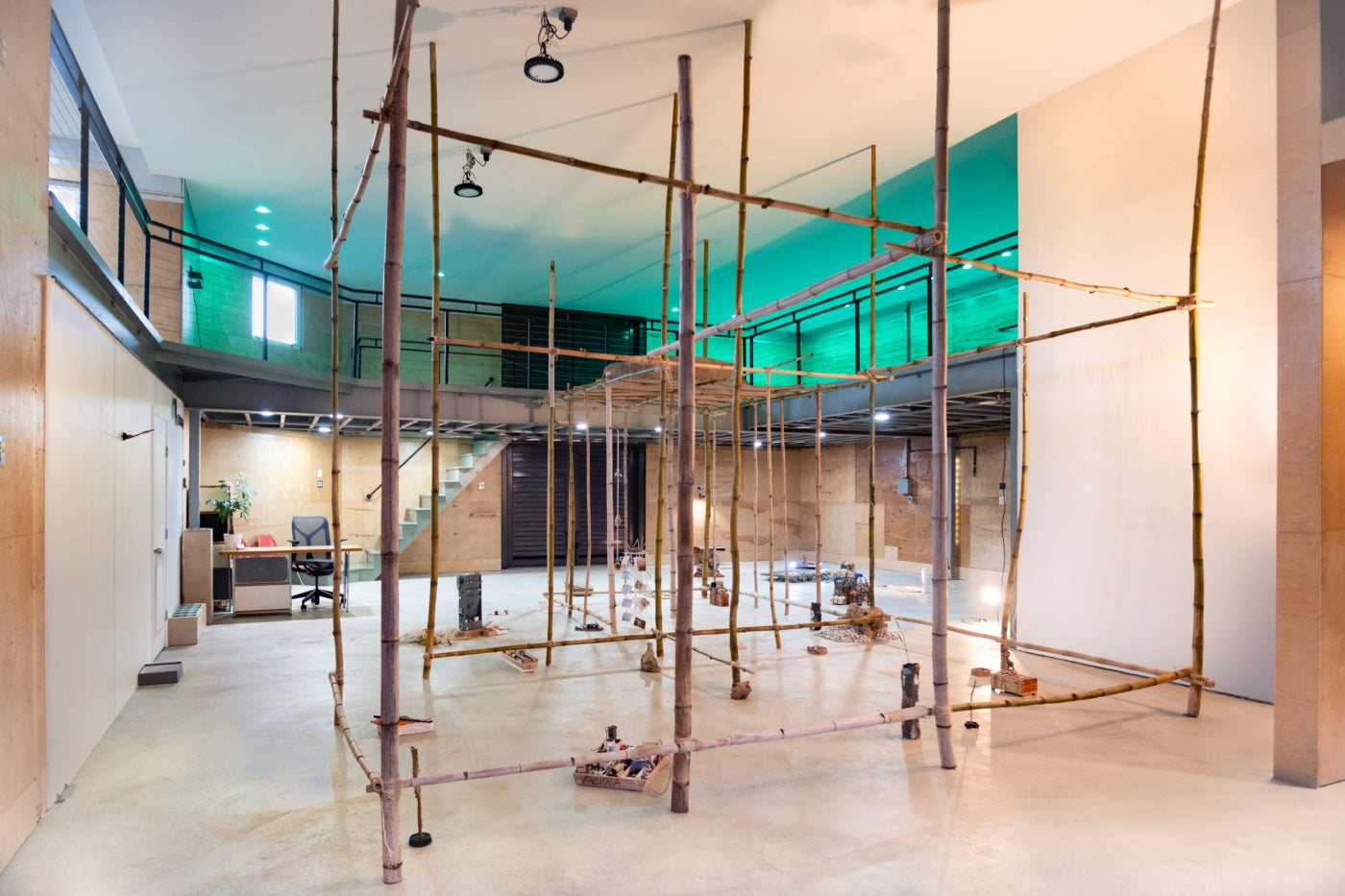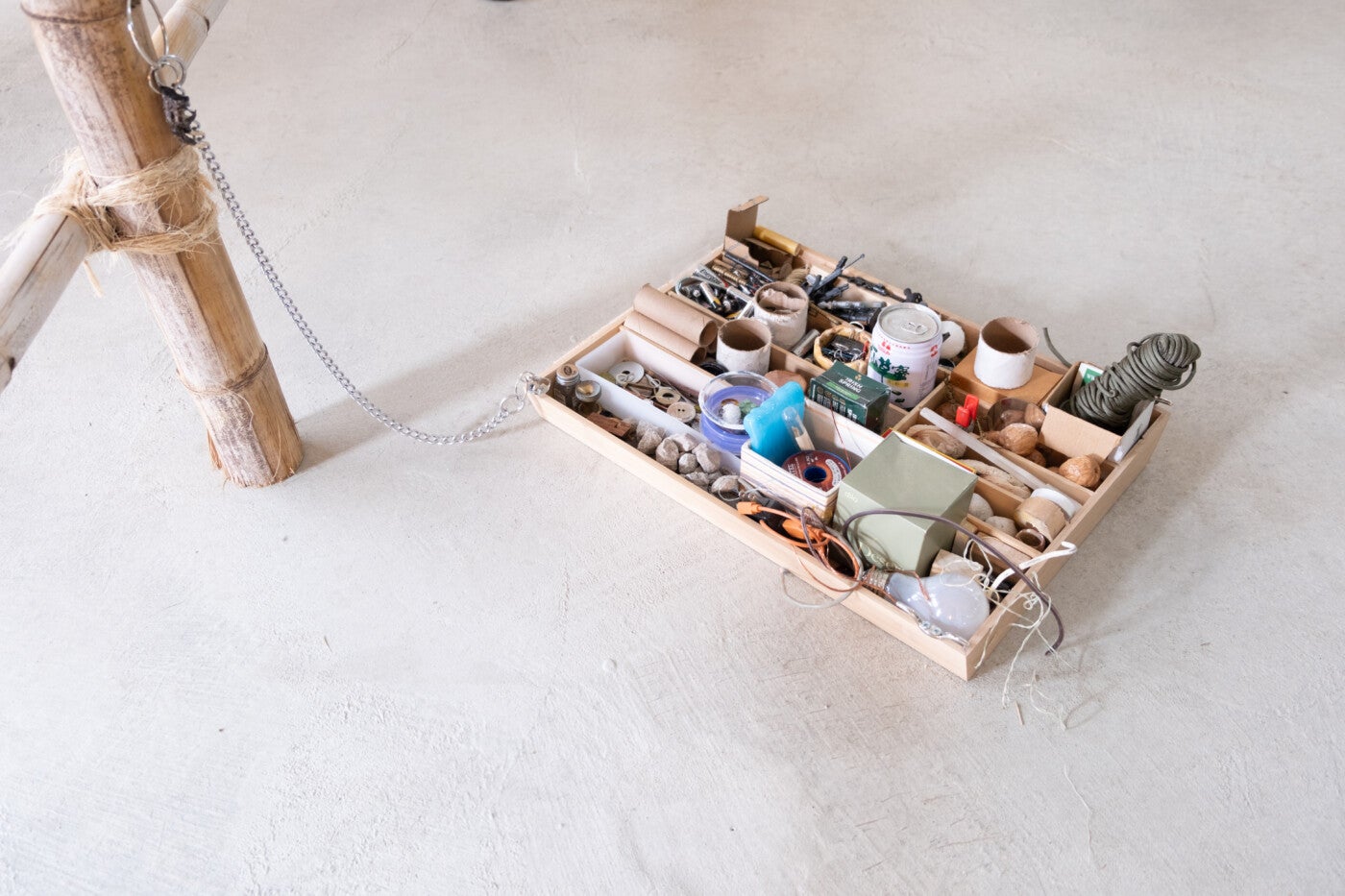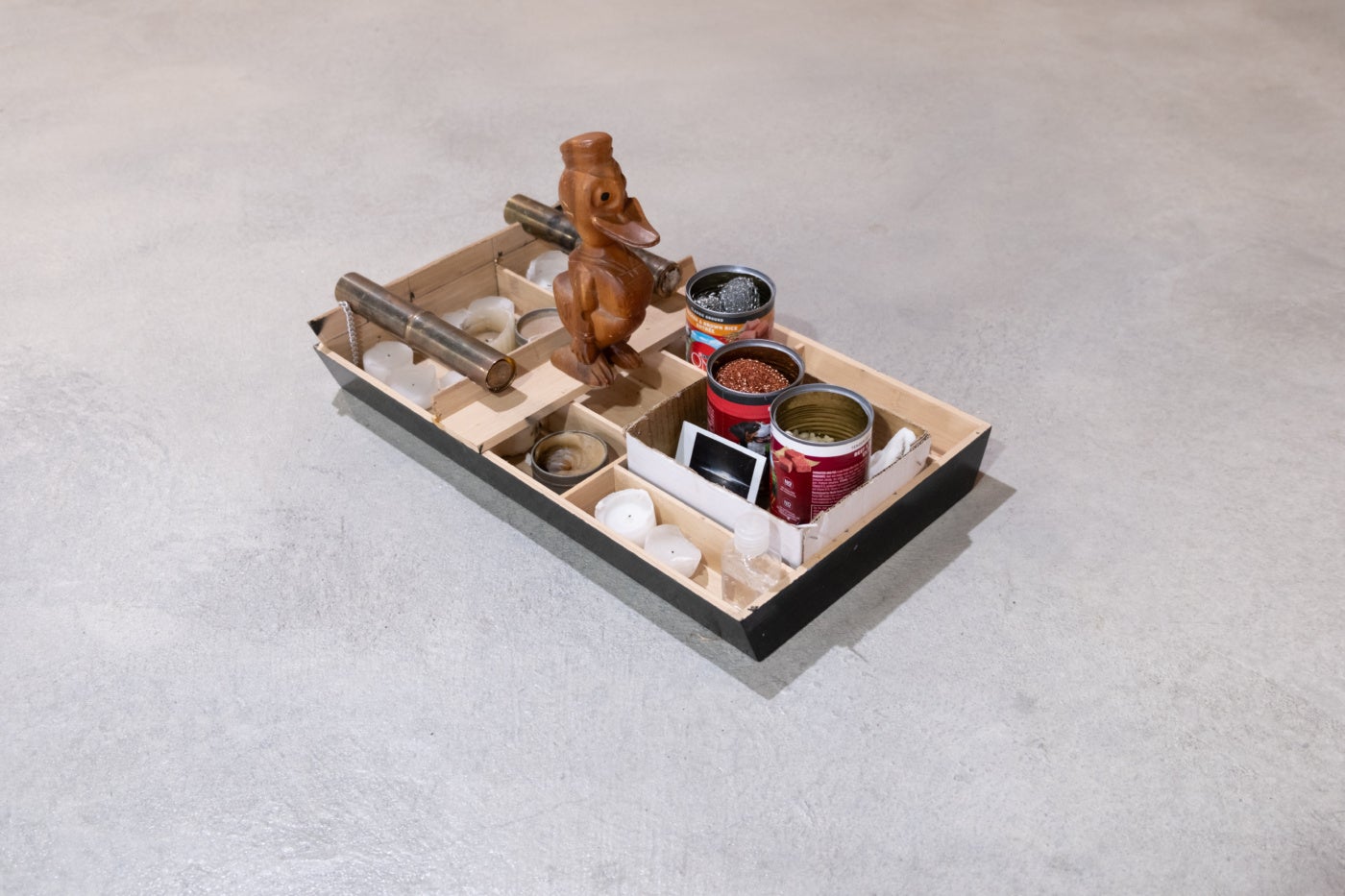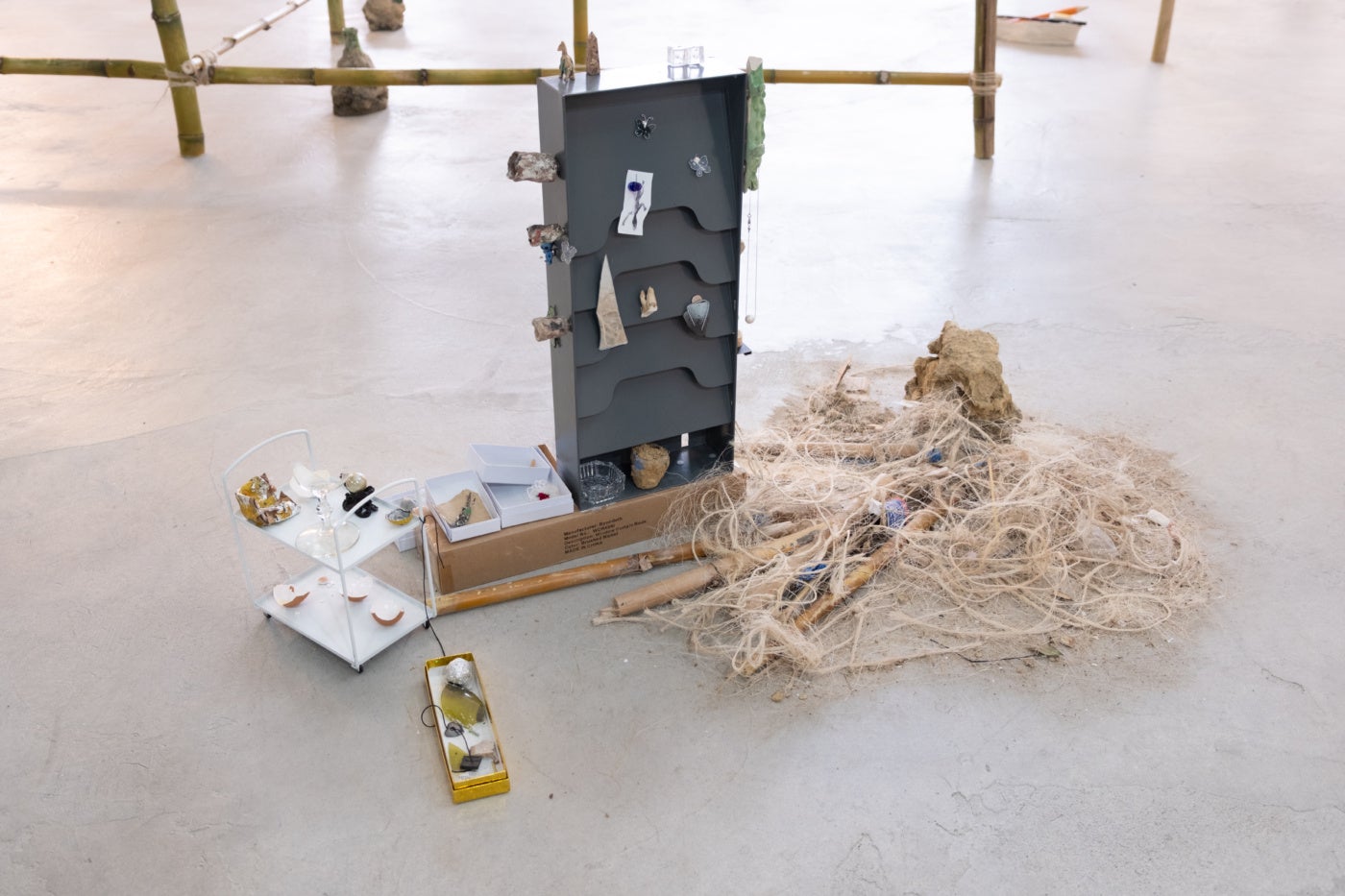Jon Gott’s current solo exhibition, Foreign Correspondent, at Sibyl is a journey both exotic and familiar, an exploration of travel, the meaning of home, and the devastating beauty of everyday objects. Each piece rewards long-looking and active curiosity. The list of works offers access to essential information; titles, materials, and even prices provide pathways into the work. From the doorway, the viewer encounters a large bamboo structure, open on all sides and roofed by cardboard on which there is a mud crater seen only from the balcony. The language of the show leans tropical–bamboo, turtle shells—from the perspective of a traveler—postcards, ships and anchors. Many of the sculptural works are situated on the floor like islands seen from an aerial viewpoint.

Entering the exhibition is like arriving in an unfamiliar country where the first task is to exchange money into local currency. I’ve been thinking about the show through the lens of economy, in various functions of the term.
The sculptures composed of two or three objects rely on a poetic economy that reminds me of a William Carlos Williams poem, each word precise in sound and the capacity to hold meaning beyond its literal definition. The most economically bold works are made of a single object. While you were sleeping (2002-24), a beloved dog’s toy, buried for years in the yard, is now situated in phosphorescent green light on the gallery floor. Poetic but more lyrical and dense are the “ships” that resemble junk draws, each ship named for one of the artists’ cousins-in-law in Peru: Your love boat is drifting in the dark Rosa Elena, Steamship: Glorita, and Cargo Barge Fabiola.

In another work, an “oriental tobacco tin” holds three actual dollar bills that have been partially consumed by aquatic snails the artist keeps in his studio. Below the tin on the steel shelf is a digital clock telling the time on Desolation Island, which according to the artist is the closest landmass opposite Sibyl on the other side of the earth. The price of Antipodal Clock… is listed, “Market value determined by live tide height data at Port aux Francais, Keruelen Islands.” So, the artwork costs less at low tide. As earths oceans rise, the artwork’s value also rises. These dollar bills made lacy by the dining habits of the snails, are beautiful and unique objects, certain of their own rarity. There is nothing economically conservative about the artwork’s full title which is:
Antipodal Clock
The time in Desolation Island, French Southern Territories
Our time is your money
Our snail economy is the best in the world.

The works in the show are priced from three to twenty-thousand dollars. They were wrong so we drowned, is a large, flat rock on the floor. A pile of bamboo sawdust, twine, and other debris has been swept up–beached–against the rock. They were wrong… is priced at three-thousand dollars. The artist told me, “The pricing for everything was a big consideration in the overall conceptual design. I was thinking about travelling between places and how that is reflected in currency. I wanted to play with that but also fuck with the system of commerce in art.”
How much was the rock worth in Ohio? How much is it worth now? The canon of conceptual art is full of ordinary objects whose extrinsic value is established by backstory and context. But Gott’s work doesn’t seem mind-based the way a lot of conceptual art is; it seems driven by feeling rather than thought. The artist admits he experiences profound feelings, even empathy toward things, a perspective that typically fades in early childhood. Per the artist’s instructions, all sweepings from the gallery floor will be left in front of—on the beach of—this or one other sculpture. “Sweeping [the gallery] the artist said, “I observed lots of other sediment, material that was clearly leftover from past projects.” He wanted that to have a place too, to be part of it.

Foreign Correspondent is not really a vacation from the cluttered landscape of a life, but it brings the ordinary into some ethereal light. Halfway through viewing the exhibition, I felt suddenly sad—or maybe melancholy is a better word—and inexplicably tired. Art can do this, moves us into a new physio-emotional space, rendering the subsequent hours elevated in some way, humid with meaning. Leaving the exhibition, I thought of Paul Gauguin in Tahiti and his painting titled Where Do We Come From? What Are We? Where Are We Going? This existential freak-out of a title could have been repurposed for this exhibition. Or it could be what you write on one of the postcards (“One of five images by Jon Gott printed on postcards, each in edition of 50,” yours for $3) before you leave the strange and moving archipelago of this show.
Jon Gott: Foreign Correspondent is on view at SIBYL Gallery in New Orleans through June 30, 2024.




